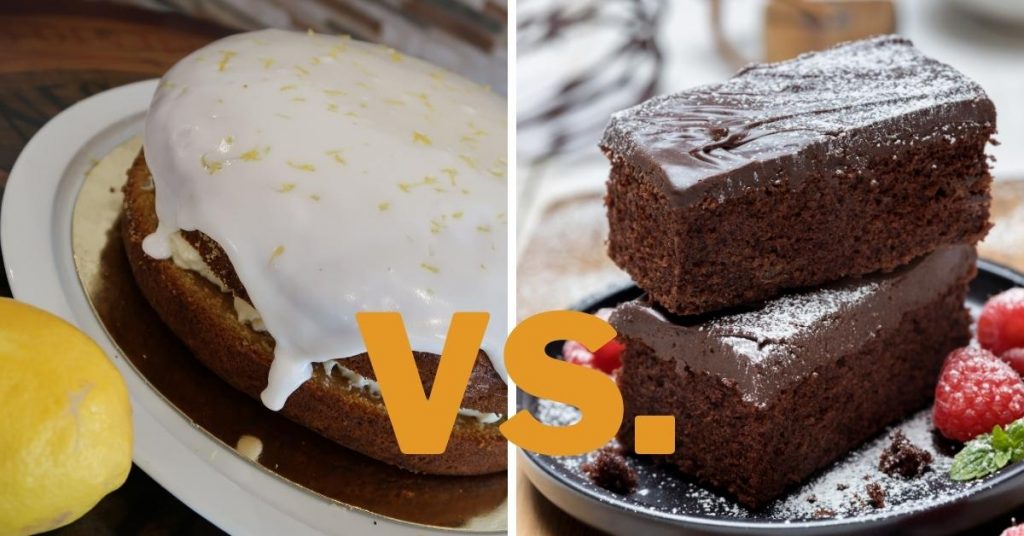Chocolate ganache is a smooth and silky emulsion made with 2 ingredients: chocolate and cream. It is perfect as a filling or for glazing desserts such as cakes, cupcakes, and even donuts. Here’s everything you ever wanted to know about this magical confection.
There’s probably no other recipe in this world that I’ve made more than chocolate ganache. I’ve mentioned it in my other posts more than I can remember, constantly suggesting it as a sauce or frosting, like in these amazing chocolate cupcakes. It’s such an easy and delicious recipe. Whenever I have leftovers, I eat the rest of it with a spoon, or drizzle it on pancakes or ice cream.
In this post, we’re talking all things chocolate ganache: what it is, how to make it, and how to use it. By the end, you’ll be rushing to the kitchen to whip up a batch of the stuff just to eat it by the spoonful.

1:1 – one part chocolate to one part cream
The recipe in this post is a 1:1 ganache. It calls for:
-230g semisweet or bittersweet chocolate -1 cup (240 ml) heavy cream
1:1 ganache is perfect as a glaze, like in my easy chocolate cake recipe. It has a thin, viscous consistency and is incredibly smooth at room temperature, although you might need to heat it for a few seconds before you glaze a cake so it’s runny enough. 1:1 ganache also works great as a filling for a variety of desserts.
How to make chocolate ganache
The first step is to chop the chocolate into small pieces. If using chocolate chips, you can simply use them as they are.
There are two methods to making ganache:
- Boil the cream. Pour the cream into a pot and bring it just to a boil. Be careful not to let it boil for too long or the liquid will begin to evaporate and the cream will start to reduce. Pour the boiling cream over the chocolate in a heatproof bowl. I recommend letting it sit for about a minute before whisking it together to emulsify.
- Melt together in the microwave. Place chocolate and cold cream in a heat proof bowl. Microwave in 30 second increments, whisking together until the chocolate is fully melted and the cream is incorporated.
Chocolate ganache makes an indulgent frosting for cakes and cupcakes. To do this, I recommend using a 2:1 ganache for this because it sets up firm. If you are going to serve a cake or cupcakes directly from the refrigerator, feel free to reduce the chocolate a bit or add a bit more cream so it’s slightly softer. But if your dessert is going to be sitting out, particularly if it’s warm, I recommend sticking with a 2:1 ratio.
Once you make the ganache, let it solidify in the refrigerator. When it solidifies slightly but is still soft enough to pipe, place it into a piping bag or use a spoon to fill and top your cakes or cupcakes.
Tip: You may have to microwave the ganache for a few seconds to soften it before piping depending how much it sets. Microwave in 5-10 second increments and mix together between to equalize the temperature. Once the ganache is at the right consistency, you can pipe it onto your cake.
Yep, that’s right! You can actually whip chocolate ganache into a creamy, fluffy frosting. With a light, mousse-like consistency, it’s another perfect topping for frosting cakes and cupcakes. If you want to try something new, I highly recommend whipping some up (pun intended)!
To make whipped ganache:
- Make a 1:1 dark chocolate ganache (or it’s equivalent with milk or white chocolate).
- Let it chill in the refrigerator until the ganache is completely solidified – around 4-6 hours should do the trick.
- Scoop the ganache into a bowl. Use a handheld mixer or a stand mixer with the whisk attachment to beat the ganache until it’s light and fluffy, about 2-3 minutes.
- Spread or pipe onto cakes or cupcakes immediately.
What is the difference between chocolate glaze and ganache? | Learn the easy cake cake decorations
What is the difference between ganache and glaze?
Ganache is a chocolate-based mixture that’s used to thicken and provide extra flavor. Glaze, on the other hand, is an icing made with powdered sugar applied over cake or cupcakes after they have been baked. Ganache is a chocolate mixture that is made with cream and dark chocolate. It’s used as a filling in cakes, cookies, and pastries.
What is chocolate ganache?
What is Ganache? Chocolate ganache (pronounced geh- N ahsh) is a basic pastry component made up of only two ingredients: melted chocolate and cream. This rich chocolatey mixture is incredibly versatile and can be used to make chocolate truffles, dessert sauces, cake fillings, icings, whipped ganache frosting, and glazes.
What is the flavor of ganache?
Chocolate is the flavor of the ganache. Because there are very few ingredients in this recipe, use the best quality chocolate you can. Heavy Cream, Whipping Cream, or Double Cream thins out the texture of the chocolate. The final texture of the ganache depends on the ratio of the cream to chocolate.
What is ganache made of?
Ganache is a glaze made with 2 simple ingredients: chopped chocolate and heavy cream. It’s thicker and more rich than regular melted chocolate and is often used as a filling or topping in many dessert recipes. Its consistency is smooth and spreads easily. The frosting is typically made with cocoa powder, butter, powdered sugar, and cream.
